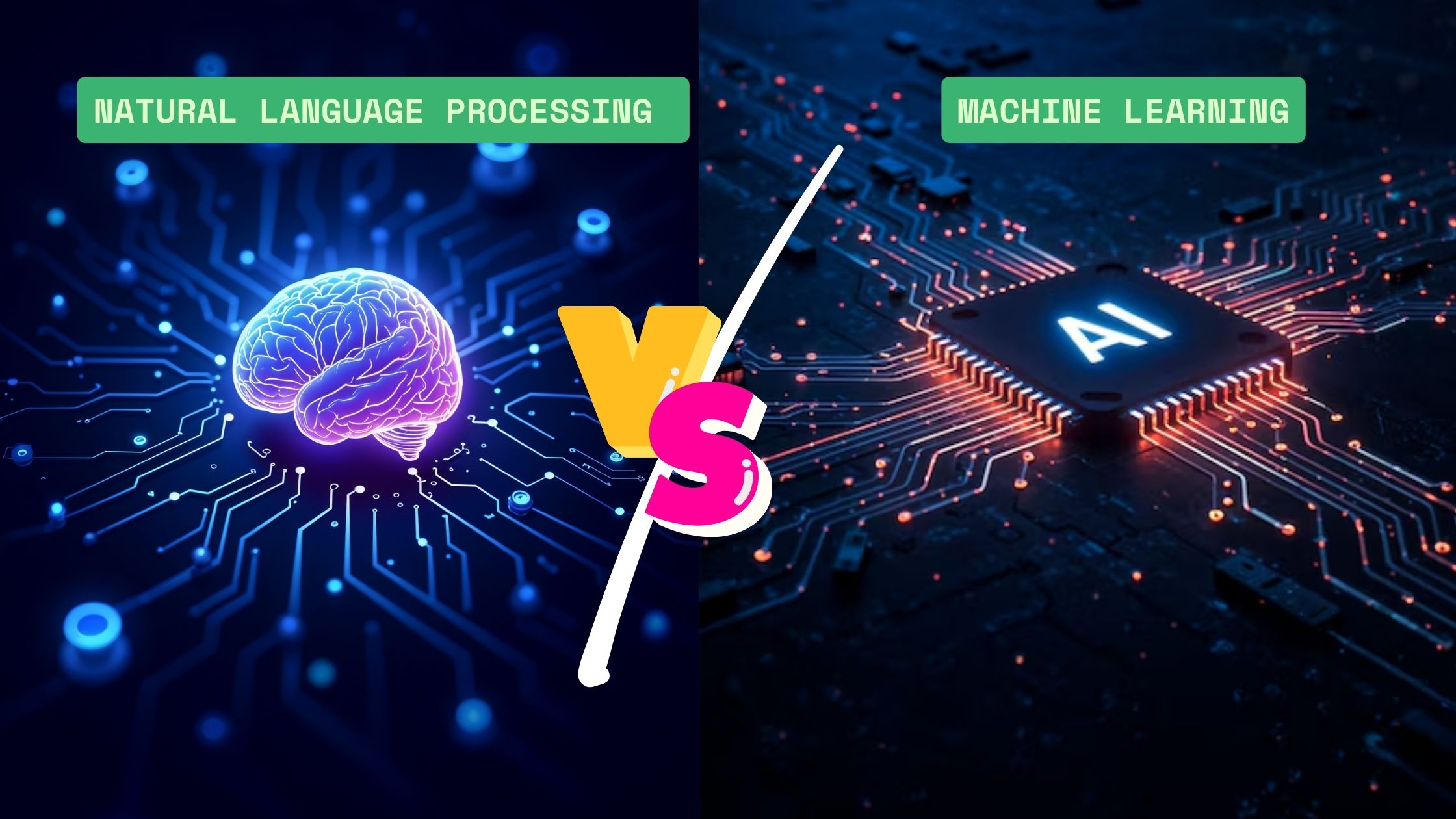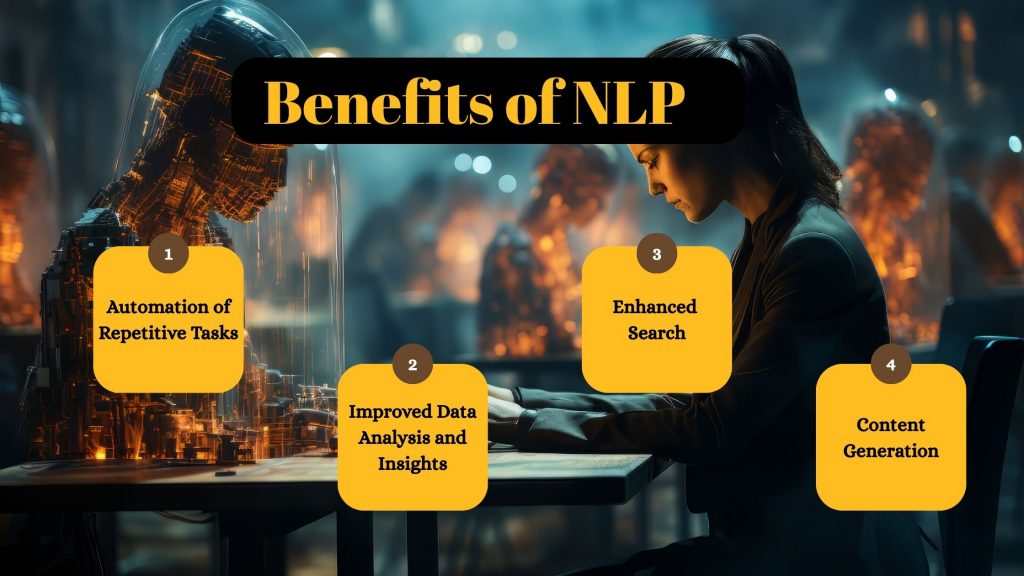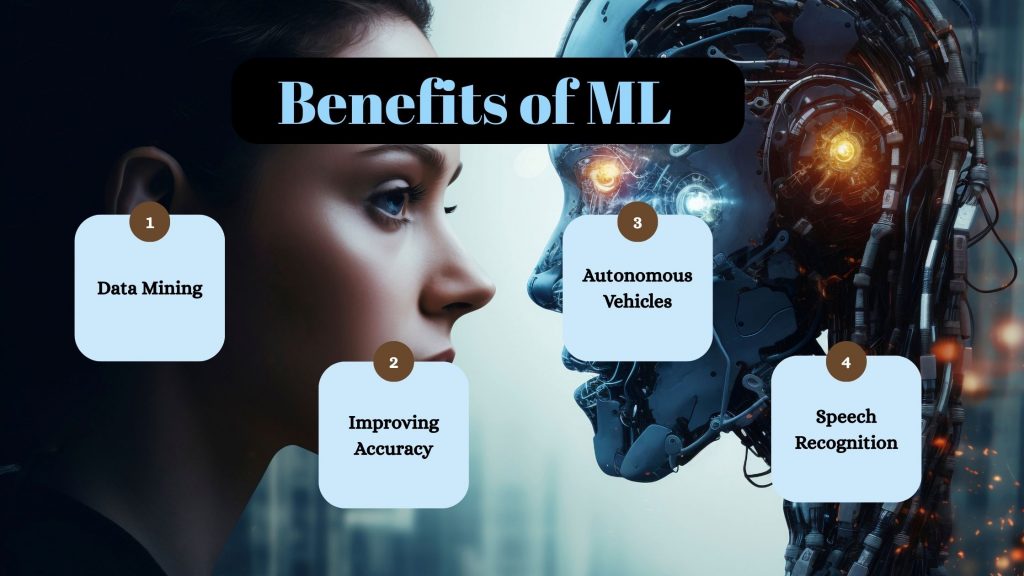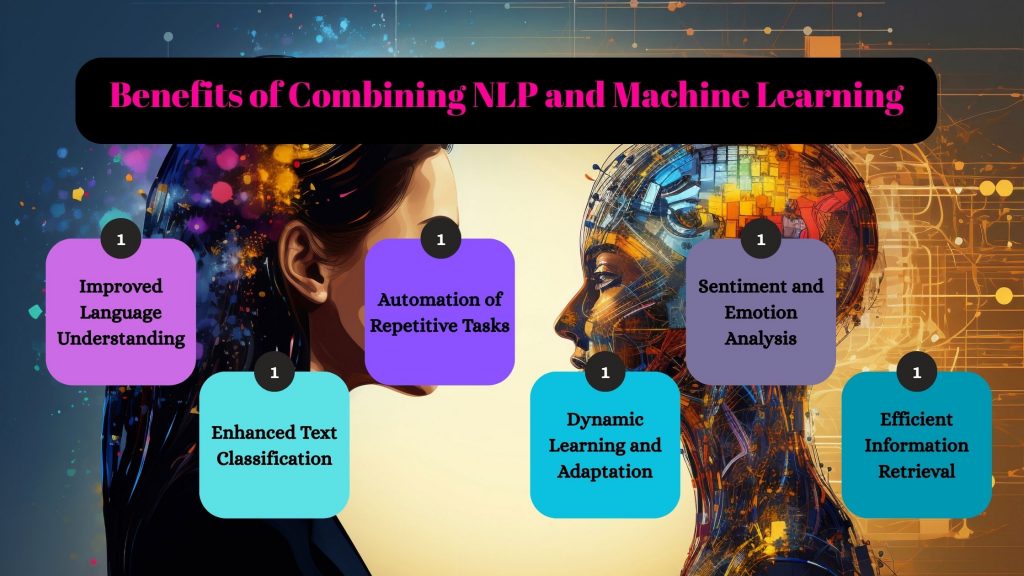
Natural Language Processing vs Machine Learning: What’s the Difference?

Blog Summary:
This blog explores the key differences and connections between Natural Language Processing and Machine Learning. It highlights their individual benefits, practical applications, and how they work together to create smarter, data-driven solutions. Get to know how these technologies are transforming the way businesses analyze data and interact with customers.
In today’s rapidly evolving digital landscape, the terms Natural Language Processing vs Machine Learning are often used interchangeably, yet they represent distinct but interconnected fields within artificial intelligence. Both technologies are transforming how businesses, researchers, and developers approach complex data problems, especially those involving human language and decision-making processes.
Natural Language Processing refers to the ability of machines to understand, interpret, and generate human language in a way that is both meaningful and useful. On the other hand, Machine Learning involves training algorithms to learn from data patterns and make predictions or decisions without explicit programming for every task.
Understanding the differences and interplay between NLP and ML is crucial for leveraging their full potential. Whether it’s enhancing customer interactions with chatbots, automating repetitive data tasks, or driving innovations like autonomous vehicles, these technologies continue to reshape industries worldwide.
This comprehensive guide will explore both NLP and ML in depth, highlight their unique benefits, key differences, and how combining them can lead to more powerful solutions. We’ll also discuss common challenges and provide insights into deciding when to use NLP, ML, or both to meet specific goals.
Explanation of Natural Language Processing
Natural Language Processing (NLP) is a specialized branch of artificial intelligence that enables computers to understand, interpret, and respond to human language in both written and spoken forms. Because human language is full of complexities like context, idioms, and ambiguity, NLP combines techniques from linguistics, computer science, and machine learning to break down and analyze language.
This helps machines perform tasks such as translation, sentiment analysis, speech recognition, and text generation.
By processing text through steps like tokenization and part-of-speech tagging, NLP systems can identify the structure and meaning of language. Advanced models, often powered by machine learning and deep learning, improve the computer’s ability to grasp context and subtle meanings.
As massive amounts of textual data continue to grow daily—from social media to customer feedback—the future of NLP plays a crucial role in automating language-based tasks and extracting valuable insights for businesses and applications.
Benefits of NLP

Natural Language Processing offers numerous advantages that help businesses and organizations efficiently handle and extract value from vast amounts of textual data. These benefits range from automating mundane tasks to improving data analysis and enhancing user experiences through better search and content generation.
Automation of Repetitive Tasks
NLP helps automate repetitive language-based tasks that would otherwise require significant manual effort. This includes activities like sorting emails, answering common customer questions, and processing large volumes of text data. By automating these routine tasks, businesses can save time, reduce errors, and increase overall efficiency.
Improved Data Analysis and Insights
With NLP, organizations can analyze unstructured text data such as customer feedback, social media conversations, and documents. This allows for the extraction of meaningful insights, including trends and sentiments, which help businesses make better, data-driven decisions.
Enhanced Search
NLP improves search functionality by understanding the intent and context behind user queries. This enables more accurate and relevant search results, providing users with the information they need quickly and effectively.
Content Generation
NLP techniques also enable the automatic generation of content, such as summaries, reports, and even creative writing. This capability helps companies create high-quality content faster and at scale, supporting marketing, communications, and other business needs.
Confused About Natural Language Processing vs Machine Learning?
Discover how understanding their differences can help you choose the best technology for your business needs.
Explanation of Machine Learning
Machine Learning is a subset of artificial intelligence that focuses on building systems that can learn from data and improve their performance over time without explicit programming. It enables computers to identify patterns, make predictions, and make decisions by analyzing vast amounts of data, which is essential for solving complex problems across various industries.
Machine Learning algorithms analyze input data, learn from it, and use that learning to make informed decisions or predictions. These algorithms improve with experience, enabling applications such as recommendation systems, fraud detection, and image recognition.
As the amount of data grows, the future of ML looks promising, with models becoming more accurate and capable of handling increasingly sophisticated tasks.
Benefits of Machine Learning

Machine Learning solutions offer a wide array of benefits that help organizations unlock the potential of their data. By enabling systems to learn and adapt, ML drives improvements in accuracy, efficiency, and automation across many real-world applications.
Data Mining
Machine Learning techniques enable the discovery of patterns and relationships within large datasets. This helps businesses uncover hidden insights, identify trends, and make better strategic decisions by analyzing vast amounts of data that would be impossible to process manually.
Improving Accuracy
ML models continuously improve their predictions and decisions as they are exposed to more data. This ability to learn from past experiences leads to greater accuracy in tasks such as forecasting, classification, and anomaly detection.
Autonomous Vehicles
One of the most exciting applications of machine learning is in autonomous vehicles. ML algorithms process sensor data in real-time to make driving decisions, improving safety and enabling self-driving cars to navigate complex environments.
Speech Recognition
Machine Learning powers speech recognition systems that convert spoken language into text. These systems are used in virtual assistants, transcription services, and accessibility tools, making technology more accessible and user-friendly.
Key Differences of Natural Language Processing vs Machine Learning
Although Natural Language Processing (NLP) and Machine Learning (ML) both fall under the broad umbrella of artificial intelligence, they serve different purposes and operate on distinct principles. Understanding these differences helps clarify when to apply each technology effectively.
Definition and Scope
NLP is a specialized branch of AI focused exclusively on enabling machines to understand, interpret, and generate human language. Its scope covers various linguistic tasks such as syntax analysis, semantics, sentiment detection, and language translation.
NLP deals primarily with unstructured textual and speech data, tackling the inherent ambiguity and complexity of natural languages. The goal is to bridge the gap between human communication and machine understanding by making language accessible to computers.
Machine Learning, on the other hand, is a broad field centered around building algorithms that allow computers to learn from data and improve their performance over time. ML is not limited to language tasks but applies across diverse domains like image recognition, recommendation systems, fraud detection, and predictive analytics.
Its scope involves processing structured and unstructured data, using statistical methods to identify patterns and make decisions without explicit programming for every task.
Core Functionality
The core functionality of NLP lies in processing and analyzing natural language data. This involves breaking down sentences into tokens, understanding grammatical structures, identifying entities, and extracting meaning.
NLP tasks focus on making sense of text or speech to perform activities like translation, summarization, and question answering. It relies heavily on linguistic rules combined with ML models to handle ambiguity and context in language.
Machine Learning’s core function is to develop models that learn patterns from input data and make predictions or decisions based on these patterns. ML algorithms generalize from training data to perform tasks such as classification, regression, and clustering. Unlike NLP’s language-specific focus, ML models can work with numeric, visual, textual, or mixed data types, making them versatile across many applications that require data-driven insights.
Input Data Types
NLP primarily processes unstructured text or speech data, which includes documents, emails, social media posts, and spoken language converted to text. Handling this kind of data requires techniques for cleaning, tokenizing, and normalizing text before analysis.
NLP must address challenges such as idiomatic expressions, slang, misspellings, and the contextual meaning of words within sentences.
Machine Learning accepts a broader spectrum of input data types. It can handle structured data, like spreadsheets and databases, as well as unstructured data including images, audio, video, and text.
Depending on the problem, ML models can incorporate different feature extraction methods to convert raw data into formats suitable for learning and prediction.
Relationship with Artificial Intelligence
Both NLP and Machine Learning are integral parts of AI but occupy different roles. NLP is a domain within AI focused on language understanding, often leveraging ML techniques to enhance performance. The success of NLP systems increasingly depends on advances in ML, especially deep learning, which improves tasks like language modeling and speech recognition.
Machine Learning itself is a foundational AI approach that powers many intelligent systems beyond language. It provides the algorithms and frameworks that enable computers to learn from data, adapt to new information, and improve their output. While NLP can exist without ML (using rule-based systems), most modern NLP relies on ML to handle the complexity of language at scale.
Algorithms Used
NLP uses a combination of rule-based algorithms and statistical models. Early NLP systems relied on hand-crafted linguistic rules, but today, ML algorithms such as Hidden Markov Models, Conditional Random Fields, and neural networks are widely used. Recent advances include transformer-based models like BERT and GPT, which capture language context and nuances effectively.
Machine Learning encompasses a diverse set of algorithms, including decision trees, support vector machines, k-nearest neighbors, and deep learning neural networks. These algorithms are designed to detect patterns in various types of data and solve classification, regression, clustering, or reinforcement learning problems. The choice of algorithm depends on the task complexity, data volume, and desired interpretability.
Application Areas
NLP applications focus on language-related tasks such as chatbots, machine translation, sentiment analysis, text summarization, and voice assistants. These applications enhance user interaction by enabling computers to process human language naturally and contextually.
Machine Learning finds applications in a wider range of fields beyond language. It is used in fraud detection for finance, recommendation engines in e-commerce, medical image analysis, autonomous driving, and many other areas where predictive modeling or pattern recognition is needed. ML’s versatility makes it a critical tool for data-driven decision-making across industries.
Need for Domain-specific Expertise
Developing effective NLP models requires understanding linguistic concepts, grammar, semantics, and cultural nuances of language. Expertise in computational linguistics and language-specific challenges is essential to design systems that correctly interpret context, disambiguate meanings, and handle language diversity.
Machine Learning development demands a strong foundation in statistics, mathematics, and data science. Practitioners need to understand model selection, feature engineering, evaluation metrics, and overfitting/underfitting issues. While domain knowledge helps, ML algorithms themselves are largely domain-agnostic and can be adapted to various fields with appropriate data.
Model Interpretability
NLP models often combine interpretable linguistic rules with machine learning to balance performance and explainability. Some NLP tasks benefit from rule-based methods that offer clearer reasoning paths, which is important in sensitive applications like legal or medical text analysis.
Machine Learning models vary widely in interpretability. Simple models like linear regression or decision trees are easy to understand, while complex models like deep neural networks operate as “black boxes” with decisions that are harder to explain. This trade-off influences the choice of ML models depending on the need for transparency.
Still Choosing Between Natural Language Processing vs Machine Learning?
Let us guide you to the best technology choice for your data-driven projects.
Computational Complexity
NLP systems can be computationally demanding, especially with large language models that require significant processing power for training and inference. Tasks like machine translation or speech recognition often involve deep learning architectures with millions of parameters.
Machine Learning computational complexity depends on the algorithm and data size. Some ML models are lightweight and fast to train, while others, especially deep learning networks, require substantial resources. Advances in hardware and cloud computing have made training complex ML models more accessible.
Dependency on Language Context
NLP systems must understand the context, syntax, idiomatic expressions, and subtle variations in language to interpret meaning accurately. This dependency makes NLP uniquely challenging, as meaning can change drastically depending on context and tone.
Machine Learning models focus more broadly on identifying statistical patterns and correlations in data, which may or may not involve language context. While context is important in NLP, many ML applications like image recognition or fraud detection are less dependent on language-specific nuances.
Role of Feature Engineering
Feature engineering in NLP involves extracting linguistic features such as word frequency, part of speech tags, syntactic structures, and semantic meanings to improve model performance. These features help models understand the characteristics of language data.
In Machine Learning, feature engineering varies widely depending on the domain and data type. It might involve creating new numerical variables, scaling features, encoding categorical data, or using domain knowledge to select relevant inputs. Good feature engineering is critical for effective ML models.
Evolution and Advancements
Both NLP and Machine Learning have evolved rapidly, with deep learning driving major breakthroughs. NLP has benefited from transformer models like BERT and GPT, enabling machines to generate and understand language with remarkable accuracy. These advancements continue to push the boundaries of language AI.
Machine Learning has expanded from traditional algorithms to sophisticated deep learning and reinforcement learning techniques. Continuous improvements in data availability, computing power, and algorithm design fuel the advancement of ML, allowing it to tackle increasingly complex problems.
Benefits of Combining NLP and Machine Learning

Combining Natural Language Processing with Machine Learning creates powerful systems that go beyond the capabilities of either technology alone. Together, they enhance how machines understand, analyze, and generate human language, unlocking more advanced and nuanced applications across industries. By leveraging ML’s pattern recognition and NLP’s language-specific tools, businesses and developers can create smarter, more adaptive solutions.
Improved Language Understanding
When NLP techniques are paired with machine learning algorithms, machines achieve a deeper understanding of language context, syntax, and semantics. ML models trained on large language datasets help NLP systems grasp subtle nuances, idiomatic expressions, and even sarcasm.
This synergy enables applications like virtual assistants and chatbots to interact more naturally and accurately, understanding user intent beyond simple keyword matching.
Enhanced Text Classification
Combining NLP and ML greatly improves the accuracy of text classification tasks such as spam detection, sentiment analysis, and topic categorization. NLP extracts meaningful features from raw text, while ML algorithms learn from annotated examples to classify new data effectively. This integrated approach makes it possible to process vast volumes of text data quickly and reliably, enabling better customer insights and automated content moderation.
Automation of Repetitive Tasks
The fusion of NLP and ML automates numerous repetitive language-based tasks, reducing manual effort and increasing efficiency. For example, email sorting, customer support ticket triaging, and document summarization become faster and more consistent.
Automated language processing systems free up human resources to focus on more strategic and creative work.
Dynamic Learning and Adaptation
Machine learning enables NLP systems to adapt dynamically to new data and evolving language use. Continuous learning allows models to improve over time by retraining with fresh examples, helping maintain accuracy amid changing slang, jargon, or domain-specific terms. This adaptability is crucial for real-world applications like social media monitoring and personalized content recommendations.
Sentiment and Emotion Analysis
By combining NLP’s ability to analyze language with ML’s predictive capabilities, systems can detect not just the sentiment but also the emotional tone of texts. This is valuable for brands seeking to understand customer opinions, track public sentiment on social issues, or monitor employee morale. The integration enables more nuanced analysis than rule-based approaches alone.
Efficient Information Retrieval
NLP and ML together improve search engines and information retrieval systems by enhancing query understanding and relevance ranking. NLP processes user queries to identify intent and context, while ML models learn from user interactions to prioritize the most useful results. This results in faster, more precise access to relevant information for users.
Common Challenges with Machine Learning and Natural Language Processing
Both Machine Learning (ML) and Natural Language Processing (NLP) bring remarkable benefits, but they also face significant challenges. Understanding these challenges is essential for building effective, fair, and scalable AI-powered language systems.
Scalability
Scaling ML and NLP models to handle massive datasets and real-time processing demands high computational resources. Large models require more memory and processing power, which can be costly and slow in practical deployments.
Explainability
Many ML and NLP models, especially deep learning ones, act as “black boxes” where decision-making processes are not transparent. This lack of explainability makes it difficult to trust and validate model predictions in critical applications like healthcare or finance.
Bias
Bias in training data can cause ML and NLP systems to produce unfair or inaccurate outcomes. If datasets reflect social or cultural prejudices, models may unintentionally reinforce harmful stereotypes or discriminate against certain groups.
NLP or ML: Deciding Which One to Use
Choosing between Natural Language Processing (NLP) and Machine Learning (ML) depends on your project goals, data type, and the specific problem you’re solving. While they often work hand-in-hand, understanding when to use each is crucial for building efficient and targeted solutions.
If your project involves understanding or manipulating human language—like text summarization, chatbot development, or sentiment analysis—then NLP is the right approach. NLP techniques help extract meaning, context, and structure from language, making them ideal for tasks where linguistic interpretation is key.
On the other hand, if your goal is to identify patterns, make predictions, or classify data using structured or unstructured inputs (including language), ML is essential. Machine Learning can learn from historical data and improve its accuracy over time, making it suitable for tasks like fraud detection, recommendation systems, or predictive analytics.
In many cases, the best results come from combining both. For example, in email spam detection, NLP helps analyze the email text, and ML classifies whether it’s spam or not based on learned patterns.
Future Scope of ML and NLP
The future of Machine Learning (ML) and Natural Language Processing (NLP) looks incredibly promising as both technologies continue to evolve and integrate deeper into everyday applications. Advancements in algorithms, computing power, and large-scale data availability are fueling rapid progress in both fields.
For NLP Solution, the future includes more context-aware models that understand language with near-human accuracy. Multilingual and low-resource language processing will become more robust, enabling global applications. Generative models like ChatGPT are expected to improve in coherence, reasoning, and factual accuracy, making them more reliable for enterprise use.
Machine Learning will continue to drive innovation in automation, personalization, and decision-making across industries. Explainable AI, federated learning, and real-time model adaptation are gaining traction to improve trust, privacy, and performance. ML is also expanding into edge computing, allowing models to run efficiently on local devices without needing constant cloud access.
Together, ML and NLP are paving the way for more intelligent virtual assistants, predictive customer service, smart search engines, and accessible language tools. As they grow, they’ll redefine how we interact with technology, making human-machine collaboration more seamless and impactful.
Why Choose BigDataCentric for NLP and ML?
We deliver expert solutions that combine Natural Language Processing and Machine Learning to boost your business growth.
Final Words
Natural Language Processing and Machine Learning are two transformative technologies that are reshaping the way we interact with data and machines. While each has its own strengths, their combined power enables smarter, more intuitive, and highly scalable systems that can analyze, understand, and respond to human language more effectively than ever before.
As industries continue to generate vast amounts of unstructured and structured data, the role of NLP and ML will only grow stronger. Whether you’re aiming to build intelligent chatbots, automate business workflows, or analyze customer sentiment, understanding the distinction and synergy between NLP and ML will be key to creating solutions that are both efficient and innovative. Embracing both technologies ensures you stay ahead in a world driven by data and communication.
BigDataCentric is a trusted leader in delivering customized Natural Language Processing and Machine Learning solutions that align perfectly with your unique business needs. With deep technical expertise and a client-focused approach, BigDataCentric helps organizations unlock valuable insights from complex data, automate key processes, and enhance decision-making capabilities. By combining cutting-edge technologies with industry best practices, BigDataCentric empowers businesses to innovate faster and achieve measurable growth.
FAQs
-
What are common applications of NLP and Machine Learning?
NLP applications include chatbots, language translation, and sentiment analysis, while ML is used for recommendation systems, fraud detection, autonomous vehicles, and predictive analytics.
-
Are NLP and Machine Learning used in voice assistants?
Yes, voice assistants like Siri and Alexa use NLP to understand spoken commands and ML to learn user preferences and improve responses over time.
-
Can NLP be used for multiple languages and dialects?
Yes, but handling multiple languages requires specialized models or multilingual training data, and it can be challenging due to variations in grammar, syntax, and idioms.
-
What is the difference between traditional ML algorithms and deep learning in NLP?
Traditional ML algorithms rely on manual feature extraction, while deep learning models automatically learn hierarchical features from raw data, providing better performance for complex language tasks.
-
What types of data are best suited for NLP compared to ML?
NLP excels at handling unstructured language data such as text, audio, and speech, while ML can work with both structured data (tables, numbers) and unstructured data (images, text).

About Author
Jayanti Katariya is the CEO of BigDataCentric, a leading provider of AI, machine learning, data science, and business intelligence solutions. With 18+ years of industry experience, he has been at the forefront of helping businesses unlock growth through data-driven insights. Passionate about developing creative technology solutions from a young age, he pursued an engineering degree to further this interest. Under his leadership, BigDataCentric delivers tailored AI and analytics solutions to optimize business processes. His expertise drives innovation in data science, enabling organizations to make smarter, data-backed decisions.
Table of Contents
Toggle